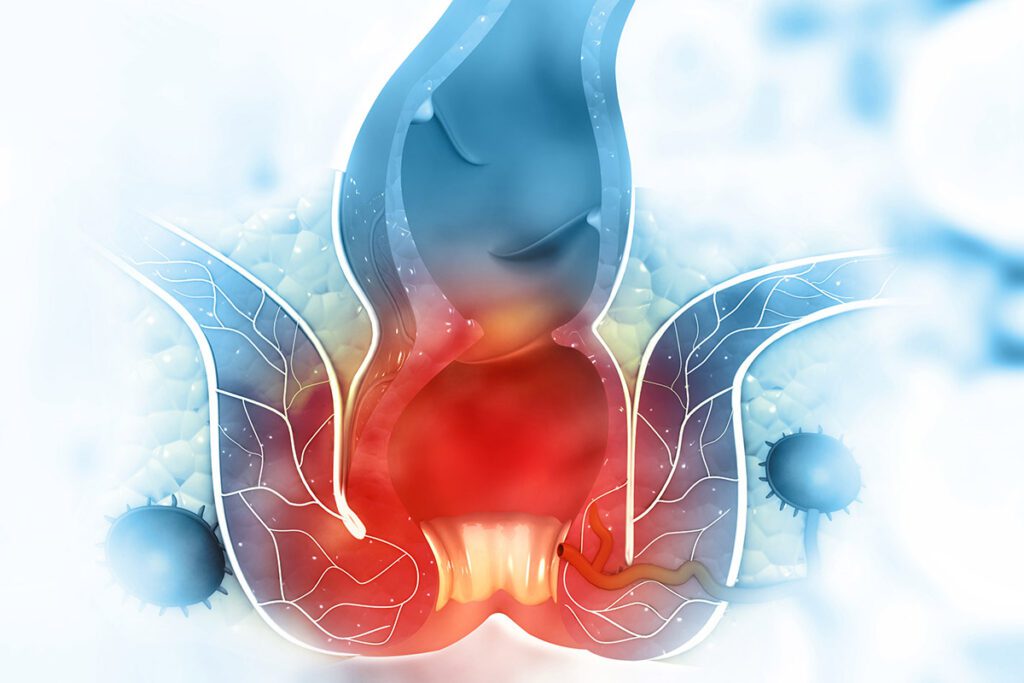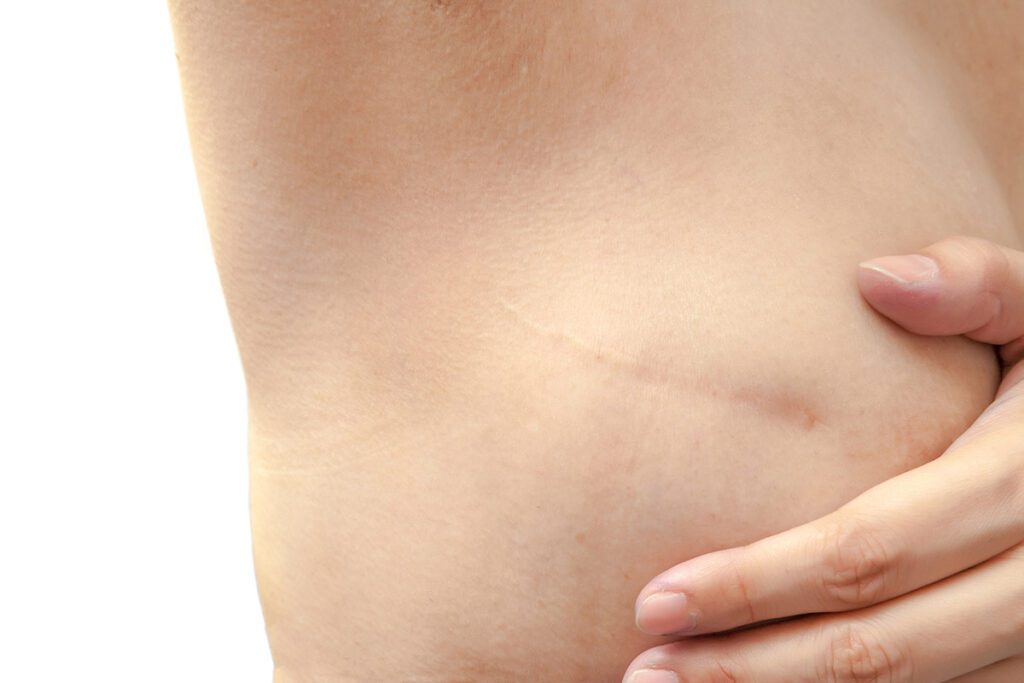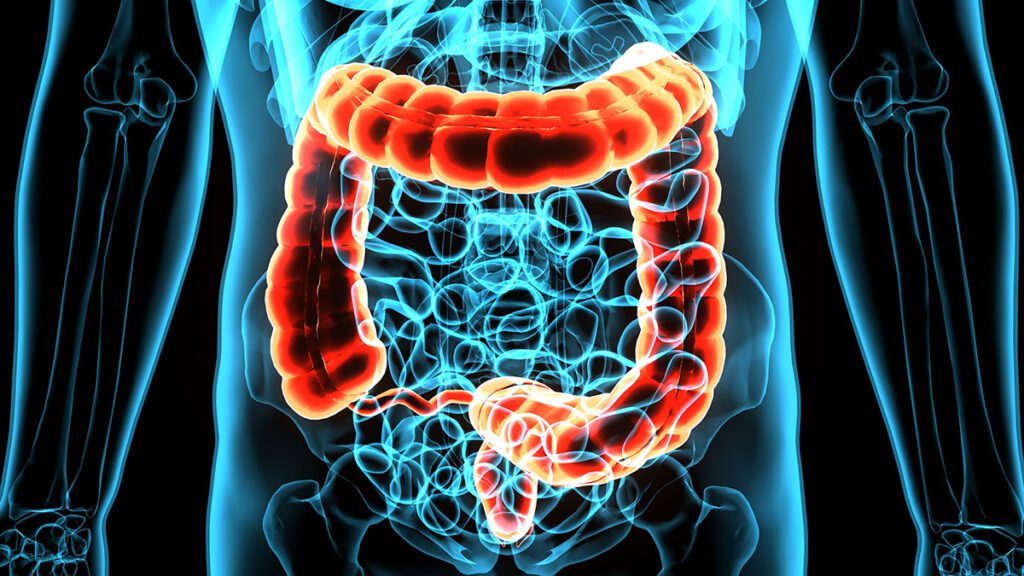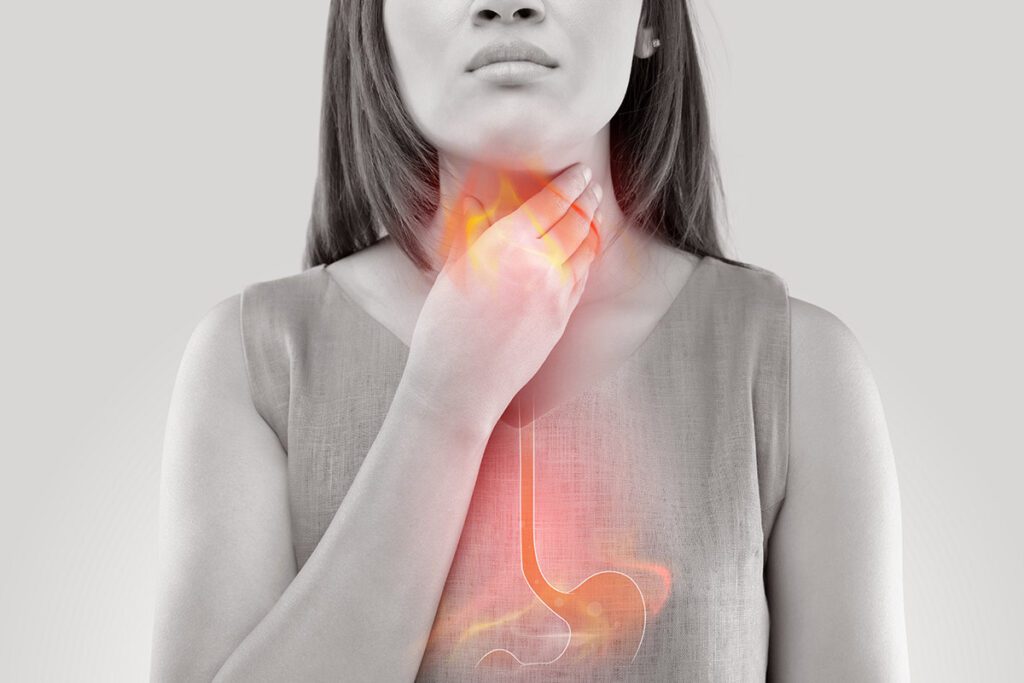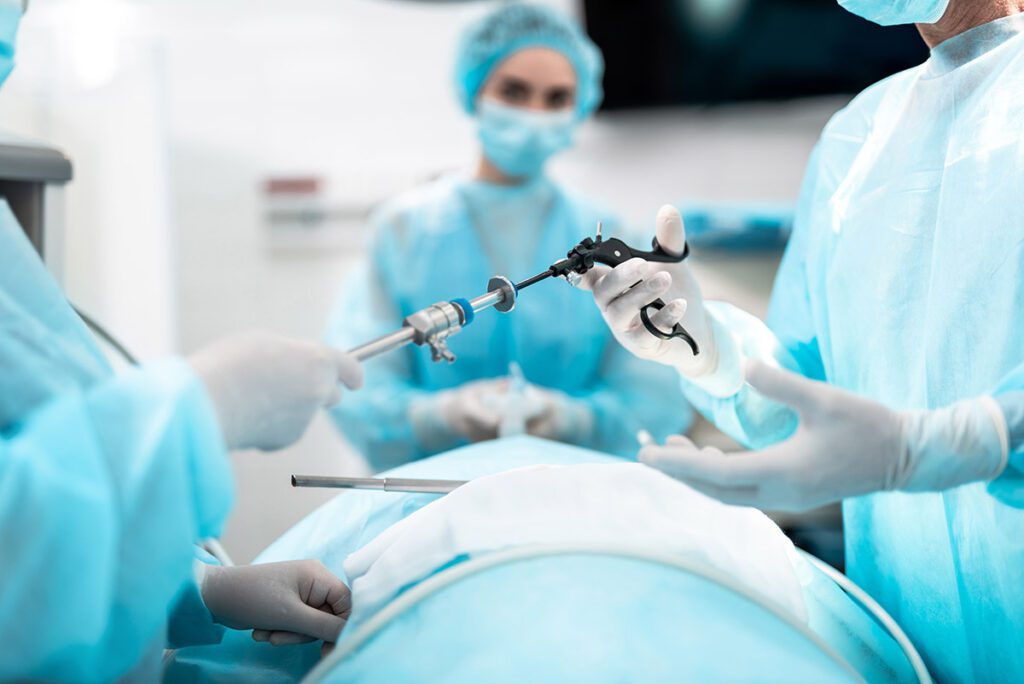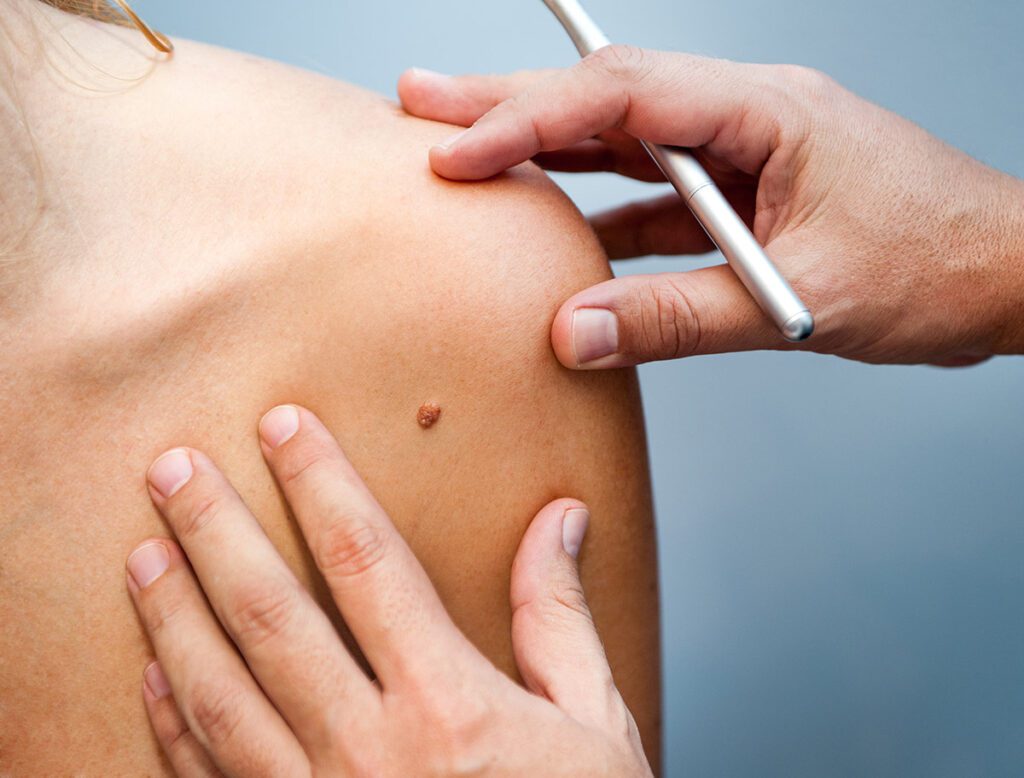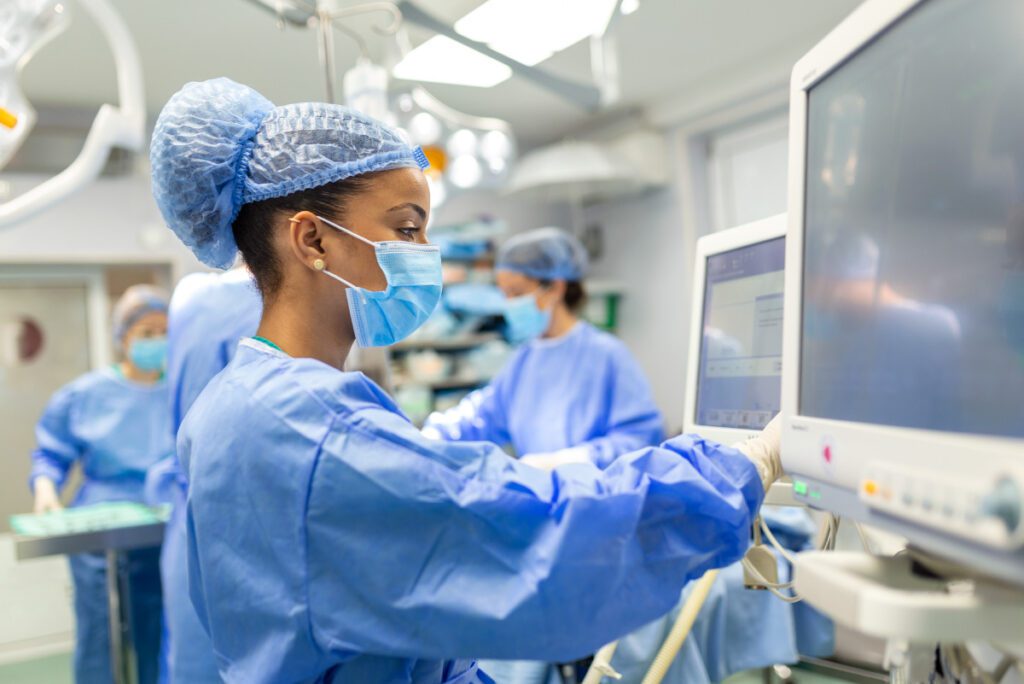Hernia
A hernia is a common condition with several types that can occur. If symptoms are present or one is found, it’s important to seek medical care quickly. Learn more about the symptoms, treatments, and different types of hernia below.
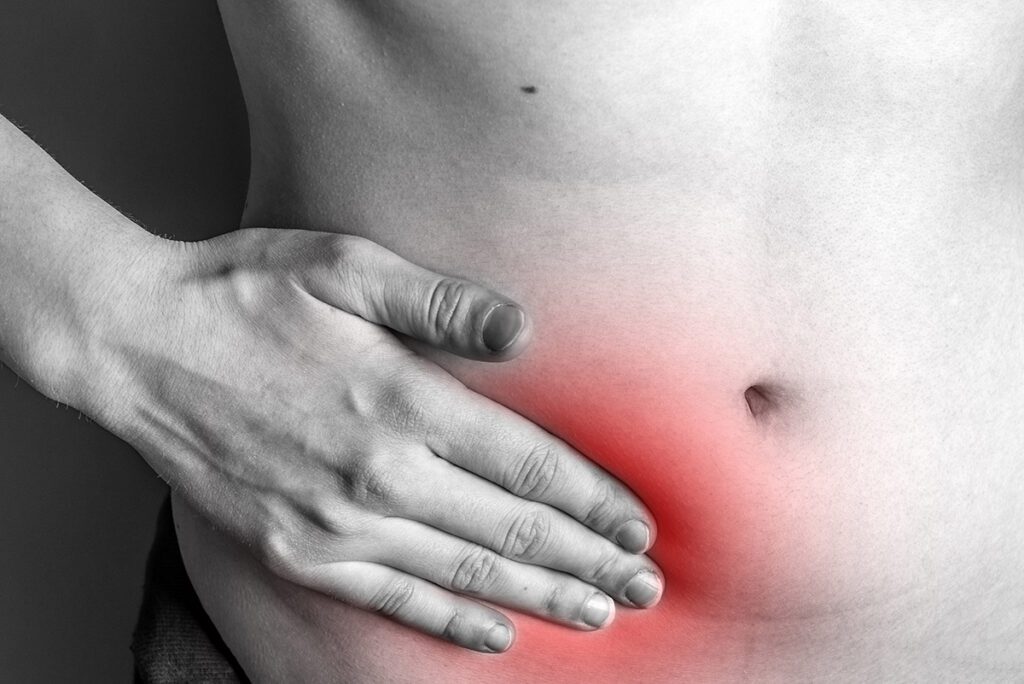

Abdominal Surgery Overview
A hernia occurs when an internal organ or body part pushes through the wall of muscle and tissue that contains or keeps it in its proper place.
While most hernias occur within the abdomen, between the chest, and hips, there are other types that can occur:
- Diaphragmatic hernia: organs in the abdomen begin to move into the chest through the diaphragm opening
- Epigastric hernia: fatty tissue coming through the abdominal area between the breastbone and navel
- Femoral hernia: part of the intestine or fatty tissue protruding into the groin at the top of the inner thigh and is a less common type of hernia
- Hiatal hernia: when the stomach pushes into the chest cavity and through the opening in the diaphragm
- Incisional hernia: tissue protruding through an abdominal scar from an operation
- Inguinal hernia: fatty tissue or a part of the intestine that comes into the groin at the top of the inner thigh, it’s the most common type of hernia and affects men more than women
- Spigelian hernia: the intestine pushing through the abdomen at the side of the abdominal muscle
- Umbilical hernia: when the fatty tissue or part of the intestine has pushed through near the belly button
Symptoms of Hernia
Hernias in the abdomen and groin can create a lump or bulge that is noticeable and can be pushed back in or disappear when lying down. Bowel movements and physical activity can make the lump reappear after being pushed back in, as well as laughing or crying, or coughing. Other symptoms of hernia include:
- pain while lifting
- increased pain where the bulge is present
- swelling or a bulge in the groin or scrotum
- a dull aching sensation
- sense of feeling full
Hernia Causes and Risk Factors
Different hernias are caused by different facts:
- Hiatal hernias may be caused by a weakened diaphragm with age or pressure, but the causes are not fully understood.
- Inguinal and femoral hernias are caused by weakened muscles, aging, or repeated strains on the groin and abdominal areas. Risk factors include obesity, pregnancy, straining during a bowel movement, and overexertion.
- Umbilical hernia is more common in infants, but adults may develop it by straining in the abdominal area, being overweight, long-lasting heavy coughs, or after giving birth.
Hernia Treatment and Surgery
The treatment for a hernia will begin with your primary care provider, but if it’s determined that surgery is needed to repair the hernia you would be referred to a surgeon. It’s important to have a suspected hernia examined as a neglected one can grow larger, more painful, and lead to more serious complications.
If surgery is recommended, there are three types of surgical treatments:
Laparoscopic surgery: tiny incisions are made that allow for the surgical tools to be inserted to repair the weakened muscles and place the protruding tissues and organs back into place
Open surgery: an incision is made at the location of the hernia and the protruding tissue is set back in its proper place while the weakened muscle wall is stitched back. In some cases, a mesh is implanted to provide extra support during healing.
Robotic hernia repair: using a laparoscope, the surgery is performed in the same fashion as open surgery and laparoscopic surgery, but the surgeon is seated at a console in the operating room operating the surgical instruments
Schedule an Appointment
Proliance Surgical Specialists of Edmonds takes pride in the level of comfort and care we provide the community. If you would like to make an appointment and discuss your health, we encourage you to reach out.

